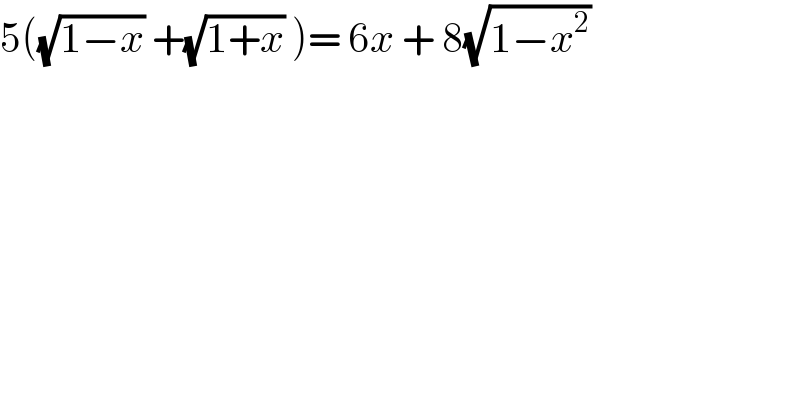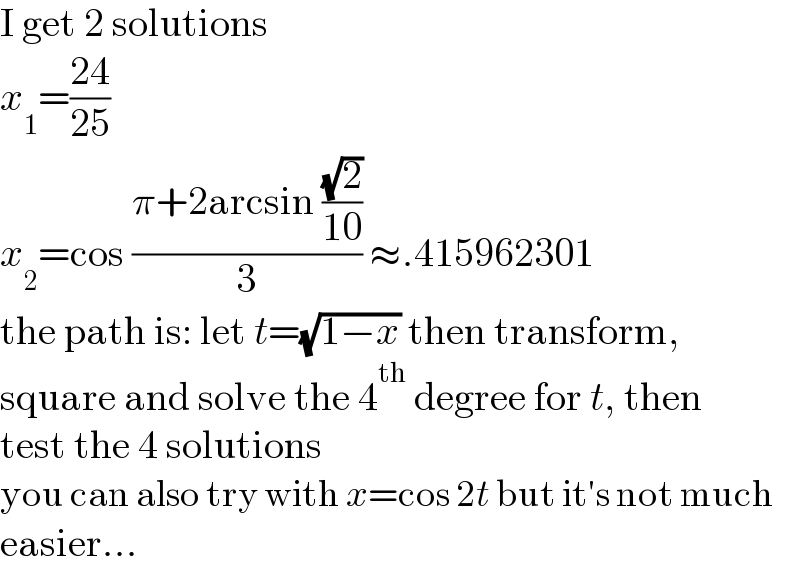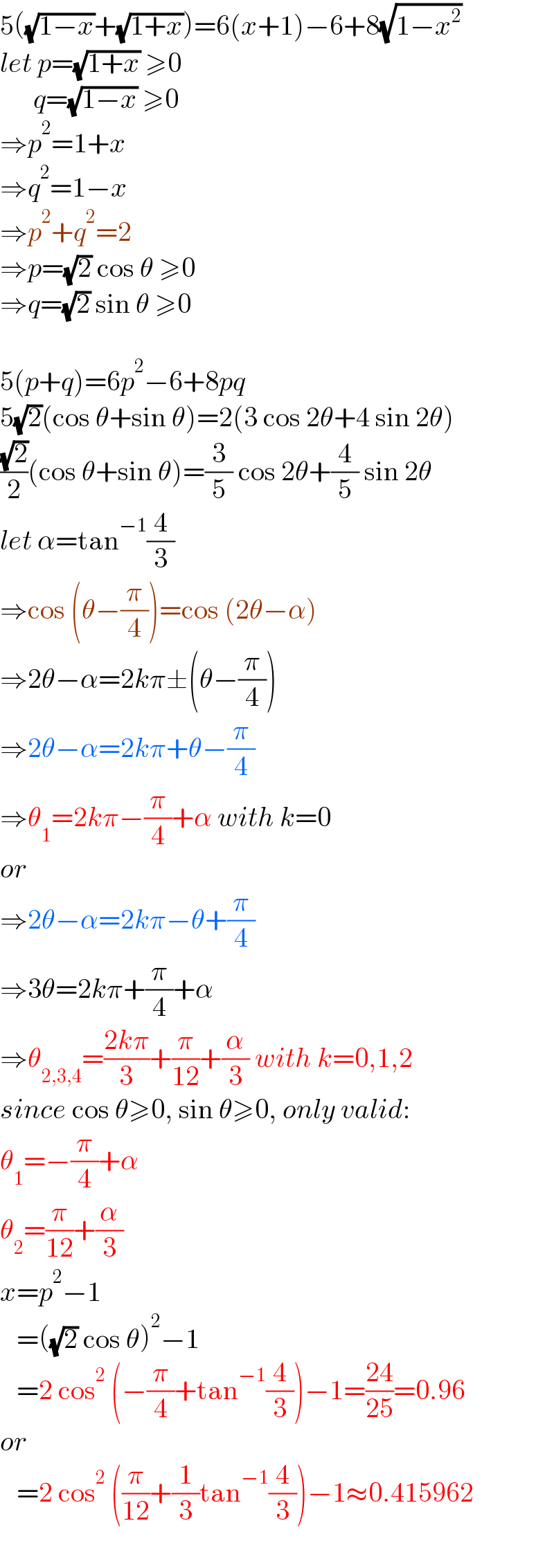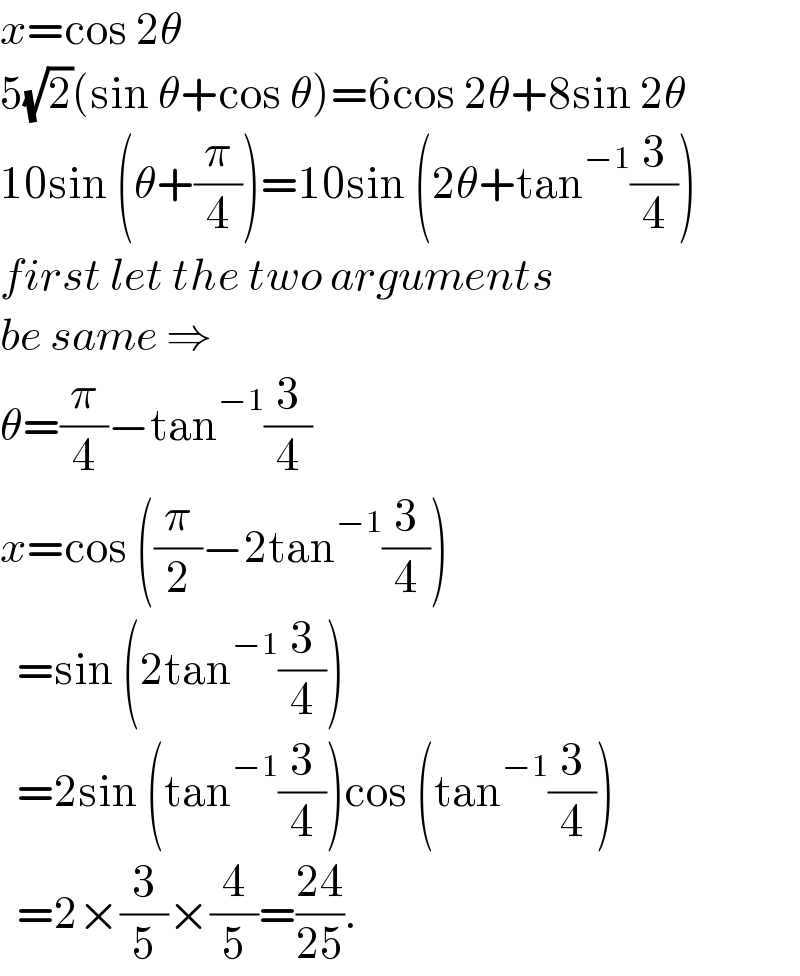
Question and Answers Forum
Question Number 136494 by liberty last updated on 22/Mar/21

Answered by MJS_new last updated on 22/Mar/21

Answered by mr W last updated on 22/Mar/21

Answered by ajfour last updated on 23/Mar/21

| ||
Question and Answers Forum | ||
Question Number 136494 by liberty last updated on 22/Mar/21 | ||
 | ||
Answered by MJS_new last updated on 22/Mar/21 | ||
 | ||
| ||
Answered by mr W last updated on 22/Mar/21 | ||
 | ||
| ||
Answered by ajfour last updated on 23/Mar/21 | ||
 | ||
| ||